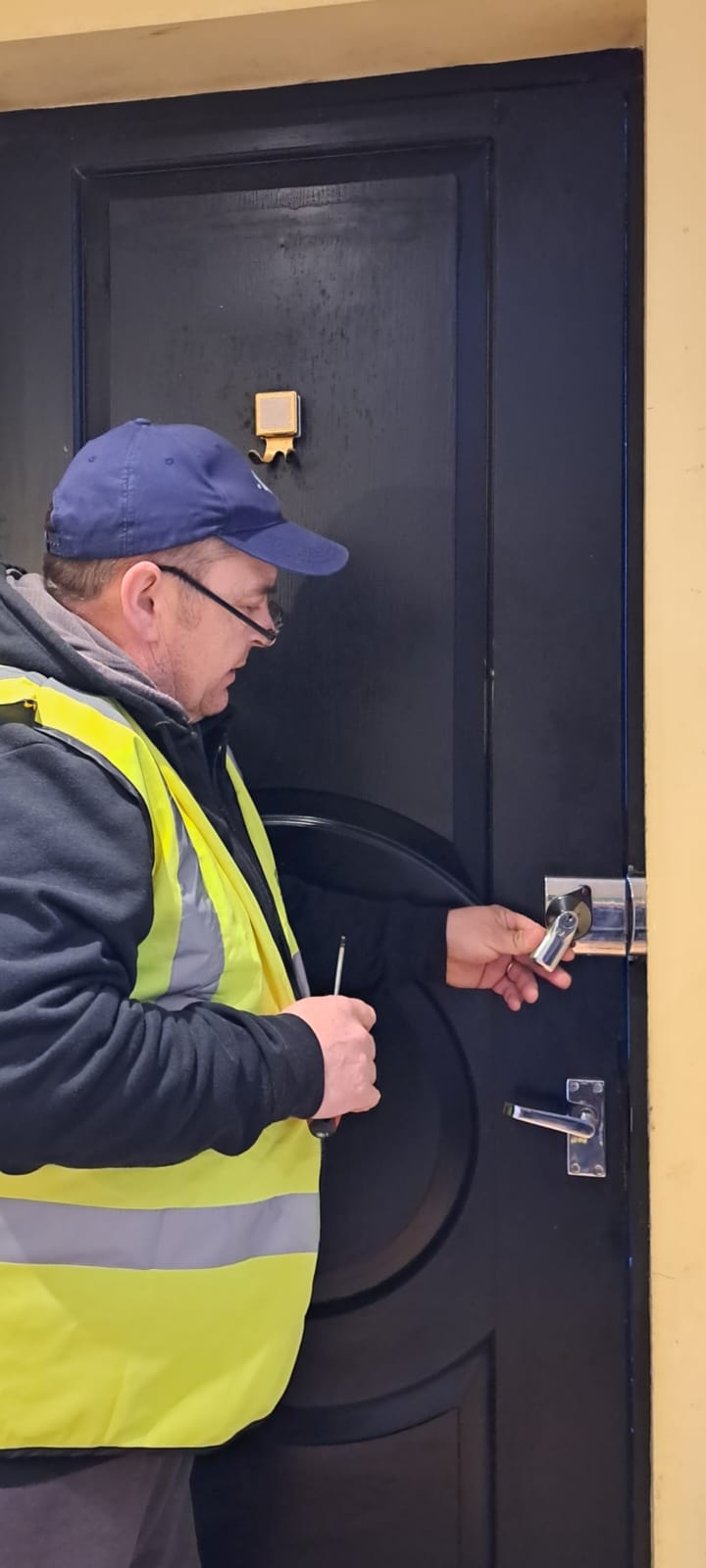A faulty or loose door handle lock can affect both convenience and security. Whether it’s turning freely, stuck, or failing to engage the latch, most handle lock issues are mechanical and can often be fixed with basic tools and a methodical approach.
Common reasons for door handle breakage
- Loose screws or fittings: Handles loosen over time with daily use.
- Worn spindle: The square rod connecting both handles can round off, stopping the latch from retracting.
- Stiff latch: Rust or dirt causes the latch to jam, especially in older internal doors.
- Misalignment: A poorly aligned strike plate or warped door frame stops smooth operation.
- Broken spring or mechanism: The internal spring inside the latch body can snap, leaving a floppy handle.
How to repair a broken door handle guide
#1. Tighten visible screws.
Remove the cover plate if necessary and use a screwdriver or Allen key to secure the handle base.
#2. Disassemble the handle.
Inspect the spindle and latch for visible wear. Replace damaged parts with matching components from a hardware store.
#3. Lubricate moving parts.
Apply a dry graphite or silicone lubricant to restore smooth rotation, but avoid oil‑based sprays that collect dust.
#4. Realign the latch and strike plate.
Loosen hinges slightly or reposition the plate so the bolt meets the centre cleanly.
#5. Reassemble carefully.
Keep the backing plate steady while tightening screws to prevent cross‑threading or misalignment.
Locksmith Tip
If your handle still spins or the latch refuses to retract after tightening and lubrication, the internal latch mechanism may be broken. A locksmith can replace the latch unit or handle lock quickly, ensuring proper seating and long‑term durability.


